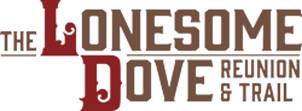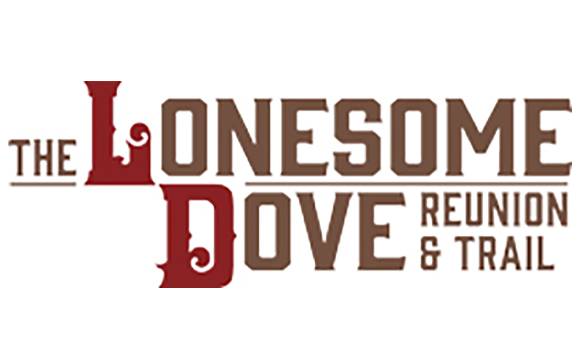Introduction
Vaqueros, Cowboys, and Cowgirls: Texas Cattle Trails to the World


The Lonesome Dove Reunion & Trail and the Center for the Study of the Southwest at Texas State University
Present
Vaqueros, Cowboys, and Cowgirls: Texas Cattle Trails to the World
April 2, 2016 | Forth Worth Public Library
Steve Davis & Frank de la Teja
Richard W. Slatta
Trailing Cattle through Swamps, Plains, and Lava Flows: Cattle Drives in South America and Hawaii
For centuries, the Llaneros of Venezuela and Colombia have herded cattle in the inhospitable Orinoco River Basin and Gauchos have moved large herds of horses and cattle across the vast flat stretches of the pampas in Argentina. In the early nineteenth century, California Vaqueros crossed the Pacific Ocean to train Hawaiians to round up and herd cattle. The Paniolo adapted Spanish techniques and equipment to drive cattle across lava flows to awaiting ships in Pacific ports. Using eyewitness accounts, paintings and historic photographs, this presentation compares the trail drive experiences of these three Hispanic-origin cowboy cultures.
Richard W. Slatta is professor of history at North Carolina State University where he has taught since completing doctoral work at The University of Texas at Austin in 1980. Promoted to full professor in 1990, he won the NCSU College of Humanities and Social Sciences Lonnie and Carol Poole Award for Teaching Excellence for 1999-2000. He also directs the university's First Year Inquiry program and teaches study abroad course in London or Prague each summer. He has been writing about cowboys for more than thirty years. His award winning books include Gauchos and the Vanishing Frontier (1983, rev. ed. 1992), Cowboys of the Americas (1990), The Cowboy Encyclopedia (1994), Comparing Cowboys and Frontiers: New Perspectives on the History of the Americas (1997), and Cowboy: The Illustrated History (2006). He is an active member of the Western Writers of America and winner of the American Cowboy Culture Award for Publishing and Writing.
Joyce Gibson Roach
A Horse of Her Own: Cowgirls, Variations on a Theme from the Frontier to the Footlights
While the visual image of cowboys has remained much the same over time—that image, having much to do with dress, equipment, vocabulary, and such—it is easy to assume the same for cowgirls, who simply borrowed everything from them. It was and is alright to use Cowboy as a label, even if some thought of them only as “Hired Men on Horseback,” as Eugene Manlove Rhodes’ poem noted. But Cowgirls? No! To call a woman a Cowgirl in the early times was dangerous, and if a husband, brother, or father heard his female kin called a Cowgirl, the caller had better be ready to fight. Yes, in the Victorian Era in which the Cowgirl was first noticed, it was a bad word, a dirty word, low, questionable, smacking of show business—and much, much worse. This presentation briefly traces the Cowgirl’s roots, defines her dual persona, details how it was possible to publicize her and the West to the world, and explores those changes over historical time that have left the Cowgirl with mixed images and something of a puzzle, but very much a woman to be historically reckoned with. And yes, she did go up the trail, down the trail, on the trail, but most important, beyond the trail.
Joyce Gibson Roach is author, historian, folklorist, rancher and naturalist. She is a Lifetime Member and Fellow of Texas State Historical Association, past president, Life Time Member and Fellow of Texas Folklore Society, an elected member of Texas Institute of Letters, and Philosophical Society of Texas, past national president and Lifetime Member of Horned Lizard Conservation Society, an Honoree in National Cowgirl Hall of Fame, founder and board chairman of Center for Western Cross Timbers Studies dedicated to educating about and conservation of the region.
Jesús F. de la Teja
The First Texas Cattle Drives: From the Saltillo Fair to the American Revolution
Although the history of cattle driving in Texas is often associated with the post-Civil War era, the organization of cattle drives as an economic endeavor was a century old by then. In the 1770s, ranching in Texas and markets in Mexico had reached the point at which Tejano ranchers could make money by taking beeves on the hoof to markets in the interior of New Spain. When the Spanish opened up a southwestern front against the British during the American War of Independence yet another destination for Texas cattle opened up in Louisiana. This presentation examines the development of this first era of Texas cattle drives, which deserves a more prominent place in the state’s rich ranching history.
Jesús F. de la Teja is Jerome H. and Catherine E. Supple Professor of Southwestern Studies, Regents’ Professor of History, and Director of the Center for the Study of the Southwest at Texas State University. He has published extensively on Spanish, Mexican, and Republic-era Texas, most recently Faces of Béxar: Early San Antonio and Texas (2016). Formerly the book review editor for the Southwestern Historical Quarterly (1997-2014), he served as the inaugural Texas State Historian (2007-2009), and as president of the Texas State Historical Association (2007-2008). Currently he serves on the board of directors of Humanities Texas and on the advisory board of the San Jacinto Museum of History. He is a recipient of the Americanism Medal from the Daughters of the American Revolution, a Fellow of the Texas State Historical Association and the Texas Catholic Historical Society, and a member of the Philosophical Society of Texas and the Texas Institute of Letters.
Byron Price
The Long Drive from Texas in Myth and Memory
For many Texas cowboys, memories of driving cattle overland to northern markets and finishing ranges after the Civil War, burned brightly long after the trails over which they had traveled had grown cold. For some drovers it was the experience of a lifetime, for others, forgettable drudgery. This presentation will explore the myriad ways in which drovers remembered the long drive and how their recollections still shape our understanding of the trail driving era.
B. Byron Price currently holds the Charles Marion Russell Memorial Chair and is Director of Charles M. Russell Center for the Study of Art of the American West at the University of Oklahoma. He is also Director of the University of Oklahoma Press. Before taking his current position Price spent nearly 25 years in the museum profession, including as executive director of the National Cowboy Hall of Fame and Western Heritage Center in Oklahoma City (1987-1996) and the Buffalo Bill Historical Center in Cody, Wyoming (1996-2001). A 1970 graduate of the United States Military Academy at West Point, Price earned an MA in Museum Science at Texas Tech University in 1977. His publications include Charles Goodnight: A Man for All Ages (2012), The Charles M. Russell Catalogue Raisonné (2007) Fine Art of the West (2004); Erwin E. Smith: Cowboy Photographer (1997); Cowboys of the American West (1996); and The National Cowboy Hall of Fame Chuck Wagon Cook Book (1995).

